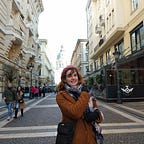Transportation by Discovery: Workshop on Children in Public Transport
Public transportation, which is a part of daily life, constitutes an important part of urban mobility. So, what is the role of children in public transport?
The Workshop on Children in Public Transport aimed to bring together the experiences and ideas of different stakeholders to answer these questions and develop solutions. Child rights monitoring studies on children’s experiences in public transport, which will be realized with the support program “Etkiniz EU”, will be implemented with the outputs of this workshop.
As a City Detective initiative, to our Children’s in Public Transport workshop; It was held in four separate sessions with the participation of children, urban planners, child rights advocates, non-governmental organizations, transportation planners, parents, local governments and associations.
We would like to share with you the outcomes of the Transportation by Discovery session, moderated by Melis Oguz and I was the rapporteur. Firstly:
Is it possible to explore while in transit?
In the discovery session, the participants were asked, “What is discovery in public transport?” and “Can you share your positive or negative experiences that come to mind when it comes to public transportation and children?” questions were posed.
Exploring in public transport is associated with travel time, the comfort of the journey and having fun. Participants shared their ideas and suggestions on how a public transport system for children to explore could be.
Discovery in public transport according to the participants:
“Learning by playing makes journeys a channel for discovery.”
“Windows are part of the discovery in public transport.”
“The fact that children experience transportation under their own control makes journeys unforgettable and discoverable.”
“Reading books in public transport is also part of discovering”
was defined with views like.
Discovery suggestions in public transportation are:
The idea of “integrating the experience of children while relating to the city” helped the participants to enter into a long process of exchange of ideas on what should be done for child-oriented public transportation planning. Participants made their own suggestions in line with the needs canvas prepared by the City Detective.
To make it possible to explore in child-oriented public transport:
Prioritizing children’s access to play, activity and cultural areas while planning public transportation, designing public transportation stops in a way that triggers children’s curiosity about their environment and urban texture, organizing educational and cultural activities where children can learn by playing public transportation rules, educating public personnel working in the public transportation system on children’s rights, to support public transportation with visual and audio broadcasts, to gamify travel in transportation vehicles and to create spaces that encourage reading are necessary.
Project ideas that can be implemented in line with these requirements according to the participants:
“Public transportation routes, boards and maps suitable for children can be designed with the names of the stops that children can make sense of.”
“In order to spread the discovery movement with books, modular libraries can be created in school buses and children can be discovered by reading in public transportation.”
“It can be beneficial for children to discover and experience public transportation in the types of transportation that travel the entire city and are integrated with each other. (such as city safari tours, observations)
“The long stairs in the subway are one of the children’s playgrounds. And also the freedom trials… While I was going down the escalator, my son ran up the stairs and we meet upstairs. Let’s not forget the stairs! “
“Activity areas can be designed to evaluate and explore the time during waiting periods.”
“Making child-oriented city maps that can be produced like the Beyoglu Map can become important tools for exploration.”
“By using the digital world, navigation, maps and mobile applications can be designed for children, and a transportation discovery connected with the virtual world can be created.”
“While introducing children to play in public transport, it is also important to ensure collectivity at the same time.”
Experiences in Public Transport
Participants shared their positive and negative experiences in public transportation.
Positive experiences were often associated with memories of ferry and train rides. It was said that factors such as the presence of speed limits in sea and train transportation, the comfort of the interior design of the vehicles for children, the opportunity to watch the view with the presence of large windows, and the transportation routes that strengthen the rural-urban relationship, allow positive and unforgettable experiences.
The negative experiences focused especially on minibuses and buses. Factors such as sudden brakes during the journey, speeding drivers, passengers talking loudly to each other or on the phone, violations of personal space, children being silenced or not seated by adults were conveyed as negative experiences that caused intolerance and conflict among different social groups.
How can positive experiences be integrated into child-oriented public transport planning? How can negative experiences be resolved?
Participants shared their ideas based on their experiences.
“A culture of respect should be developed based on the child and children’s rights.” It was argued that behaviors such as children singing loudly, laughing, joking with their friends in public transportation can become acceptable with the development of this culture in the society.
“Childhood must be respected.”
“Children should not be marginalized to have fun in public transport.”
“Efforts to bring the encounter in public transport to a fair and inclusive form can serve a more livable world.”
In addition to these, general views were made based on the need canvas:
Social awareness studies to respect children’s travel behaviors, planning of transportation using experiences that differ according to transportation modes, teaching public transportation ethics in accordance with all age groups, and the introduction of public transportation education in schools should not be overlooked.
As a result,
The Public Transport and Discovery session completed a two-hour active participation process under two main questions. Thanks to the participation of different stakeholders and the sharing of various ideas; requirements, suggestions and solutions for child-oriented transportation planning were put forward.
